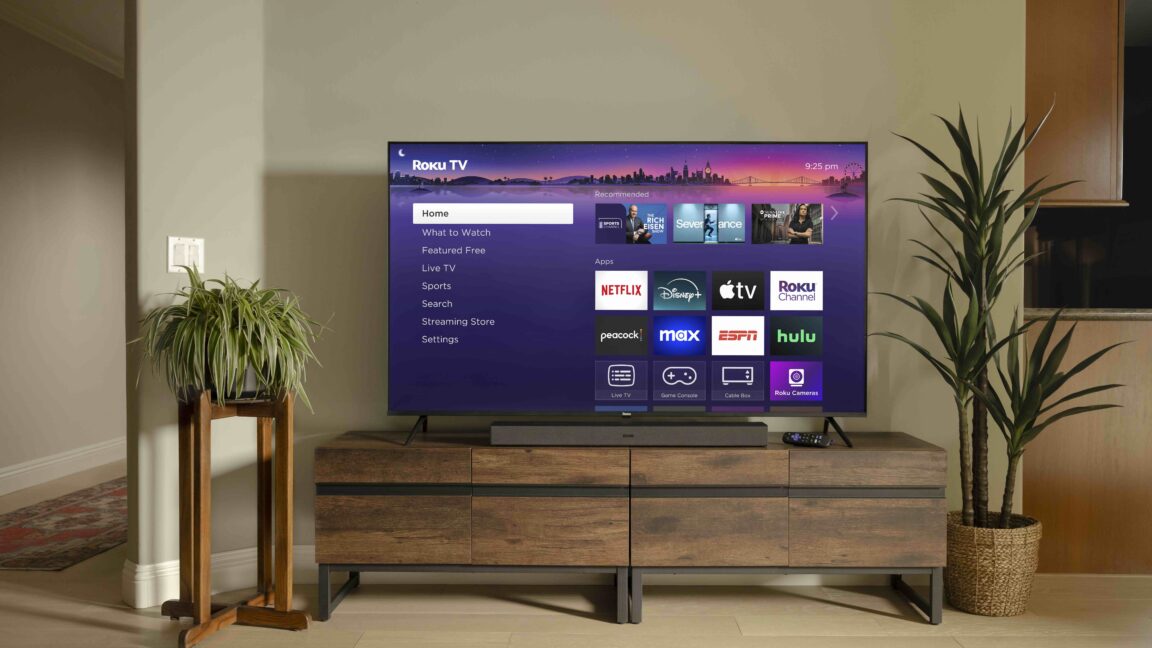Roku, owner of one of the most popular connected TV operating systems in the country, walks a fine line when it comes to advertising. Roku's OS lives on low-priced smart TVs, streaming sticks, and projectors. To make up the losses from cheaply priced hardware, Roku is dependent on selling advertisements throughout its OS, including screensavers and its home screen .
That business model has pushed Roku to experiment with new ways of showing ads that test users’ tolerance. The company claims that it doesn't want ads on its platform to be considered intrusive, but there are reasons to be skeptical about Roku's pledge. Non-“interruptive” ads In an interview with The Verge this week, Jordan Rost, Roku’s head of ad marketing, emphasized that Roku tries to only deliver ads that don't interrupt viewers.

“Advertisers want to be part of a good experience. They don’t want to be interruptive,” he told The Verge. Rost noted that Roku is always testing new ad formats.
Those tests include doing “all of our own A/B testing on the platform” and listening to customer feedback, he added. “We’re constantly tweaking and trying to figure out what’s going to be helpful for the user experience,” Rost said. For many streamers, however, ads and a better user experience are contradictory.
In fact, for many, the simplest way to improve streaming is fewer ads and a more streamlined access to content. That’s why Apple TV boxes, which doesn’t have integrated ads and is good at combining content from multiple streaming subscriptions, is popular among Ars Technica staff and readers. An aversion to ads is also why millions pay extra for ad-free streaming subscriptions.
Roku was reminded in March of how ads on its OS could be perceived as “interruptive” when it tested autoplay video ads that loaded before users saw Roku OS’s home screen. The test was an ad for the Moana 2 movie. Backlash ensued, especially among users who didn’t know the ad format was a test or that it was possible to close the video.
Rost told The Verge this week that all ads on Roku OS are “meant to be additive to the consumer experience” and that some ads are meant to “help guide people towards content they love.” However, feedback from the Moana 2 test was largely negative, with viewers criticizing the size, volume, and autoplay nature of the ad. It’s also debatable how much guidance Roku OS users really needed toward Moana 2 , a well-known children’s movie that made the third most money at the global box office in 2024, per Box Office Mojo .
Despite the backlash, Roku still plans on finding ways to make ads on its platform more “shoppable, interactive, [and] relevant," The Verge reported. Roku is built on ads, not hardware Because Roku is an ad-centric streaming platform, its long-term ability to balance non-obtrusive ads with its need to sell enough ads to keep business running is questionable. One of Roku’s most concerning ad experiments comes from a patent it received in 2024 that lets it show ads over anything you plug into a Roku TV’s HDMI port .
As my colleague Andrew Cunningham reported last year, the technology includes “multiple modules dedicated to detecting and analyzing onscreen content and inserting ads on top of an existing video stream.” The patent describes a system that analyzes paused frames, uses metadata to identify objects in the frame, and sends that data to a network. The system then receives a “relevant ad” to shop during the paused content, the patent explains.
Roku hasn’t deployed that technology, and it may never. When The Verge asked Rost about the patent this week, the executive said that Roku OS is the company’s “primary” ad focus. However, the patent underscores how reliant companies like Roku are on inventing new ways to force ads onto users, which makes Roku stand out to advertisers.
This will become more critical amid a tumultuous advertising market filled with uncertainty largely stemming from the current and potential global economic impacts of Donald Trump’s second presidential term and tariff push . For a clearer picture of how critical ads are to Roku's business, in its fiscal Q4 2024 earnings report shared on February 15 [ PDF ], Roku revealed that its devices division lost $80.4 million during the fiscal year.
Meanwhile, its platform business, which includes Roku OS and its advertising arm, reported about $1.89 billion in gross profit. According to data from Hub Media Research shared in April, based on interviews of 5,000 US consumers, Roku OS is the most common connected TV OS in the country.
This gives Roku a lot of influence over what people expect from streaming platforms. As Roku continues seeking new ways to appeal to advertisers, watchful eyes are curious to see how much Roku will open the door to ad formats that could be viewed as intrusive. Of course, corporations and streaming viewers may have differing views of what's considered intrusive.
With Roku OS's popularity, the company can play a big role in what the industry ultimately accepts in terms of ad delivery and ad loads. Today, Roku says its ads aren't meant to be “interruptive." But it's hard to ignore the fine line between selling ads and pleasing customers, as some of the experiments and developing technology have shown that Roku can cross that line.
.
Technology

Roku tech, patents prove its potential for delivering “interruptive” ads

Roku has tested annoying, obtrusive ads as recently as last month.















